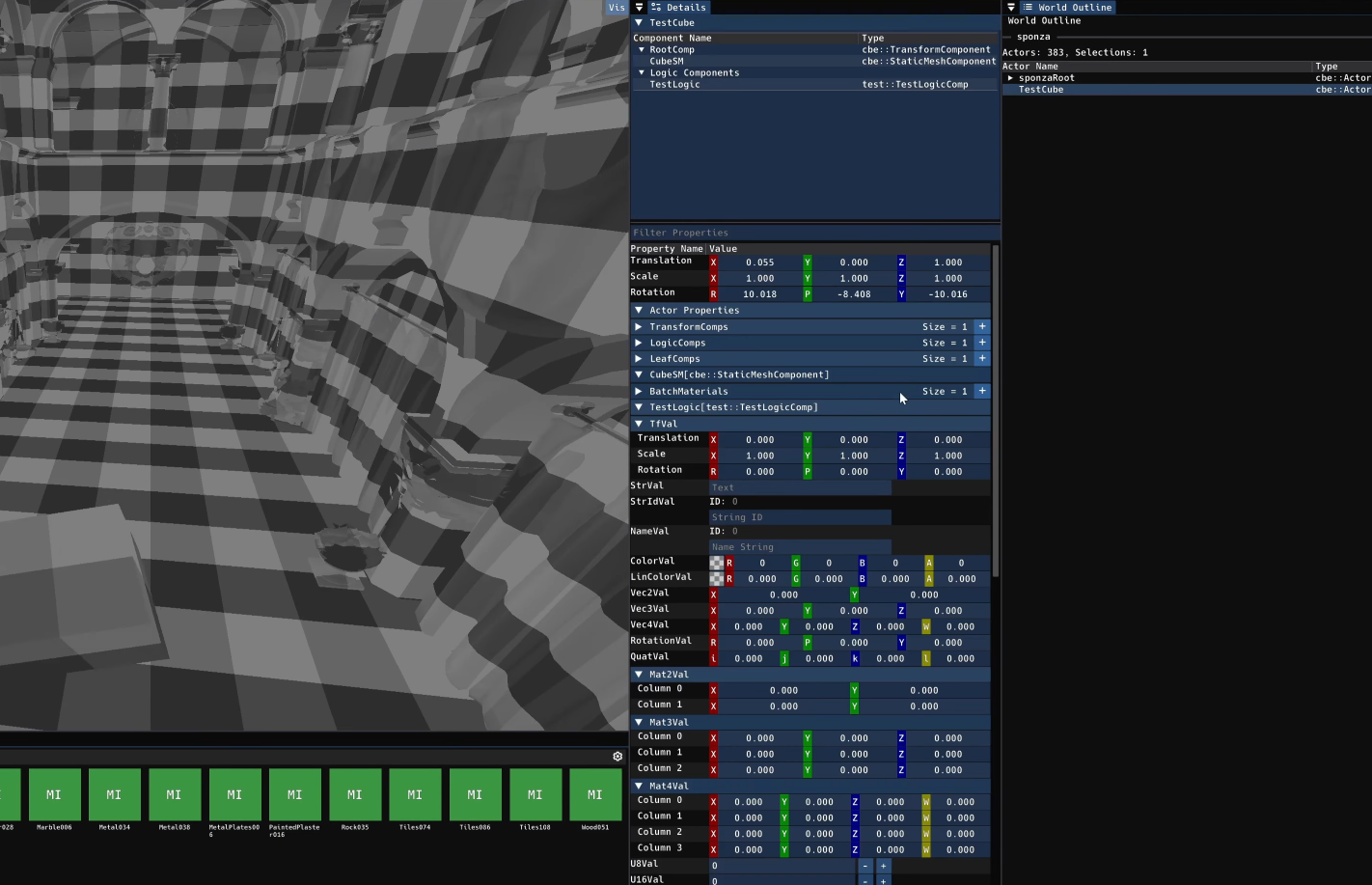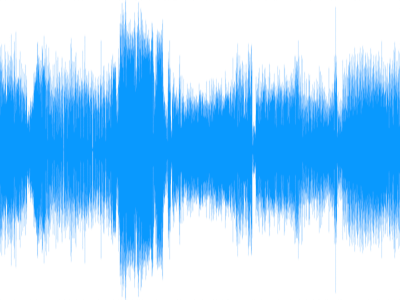Cranberry physics
Cranberry physics intro
Attention Work in progress
I want physics, ability to query the scene for purposes like audio occlusion and of course for game play queries. I took a look at Bullet and Jolt, decided to go with Jolt due to following reasons.
- Open source MIT
- Multithreaded
- Probably good enough for most of the use case I will ever have
- JobSystem integration is supported and simple
- Customizable filters are good enough to support my use cases
Jolt physics engine notes
Integrate Jolt JobSystem
Jolt’s JobSystem is just an interface with few simple rules.
- Jobs are created and destroyed with this interface.
- Each job can be included in only one barrier this makes things so much simpler.
- JobSystem, Barrier, Jobs has to be overridden to support custom behavior.
- Jobs are reference counted and lifetime is managed by that.
The goal here is to integrate the Jolt job system interface to use engine’s global JobSystem. Since our JobSystem supports single threaded mode we need two of job system and other interface implementations. One for full multithreaded mode with at least 1 worker thread and another for single threaded mode where each job on enqueue gets executed immediately.
Before we can start looking at JobSystem itself we have to provide a custom implementation for Barriers.
Barriers
Barriers are just a collection of Jobs that can be waited on for completion.
It has two function AddJob and OnJobFinished exposed as interface.
In our case
AddJobjust adds job handle or reference to a thread safe linked list. Adding a Job to barrier must add a reference to reference counter. Destroying barrier will wait for all tasks to complete.OnJobFinisheddoes not have to do anything as Job enqueueing happens at either Job construction if no dependencies or when number of dependencies drops to 0.
Barrier can use same implementation for both Single and Multithreaded mode. Exception is when waiting.
Wait function flow
- In single threaded mode, Go through each job in the list
- Execute the ones that can be executed. Executing is not needed as enqueueing must execute the whole tree however it is okay to execute here as well.
- Remove the jobs that are done.
- Do this until there is until there is no more Jobs.
- Assert the list is empty to make sure there is no missing dependencies.
- Clear the rest of the jobs.
- In multithreaded mode the steps are bit different. We can also assume that barrier never gets waited from a worker thread as Jolt never uses barrier as a way to manage dependencies between jobs. This assumption or fact makes dead lock related issues to not happen when worker threads uses different queues. If inter job dependencies are handled using Barrier then we have problem if barrier wait is queued before queueing the dependent job in the same queue. In this case barrier waits for job queued in thread’s same queue which has no chance to dequeue, there by creating dead lock.
- CAS get the linked list head with
nullptr. This is to prevent further adding of jobs to same linked list. - Count the number of jobs that are already enqueued or waiting for dependencies using some custom data structure.
- Collect those enqueued jobs in another container to be used with
copat::awaitAllTasks. - Now wait for jobs using
copat::waitOnAwaitable - Remove the done jobs from the linked list.
- Repeat the steps 2 to 5 until there is no more done jobs cleared from linked list.
- Assert the list is empty to make sure there is no missing dependencies.
- Clear the rest of the jobs.
- CAS get the linked list head with
Job
Each Job must hold some custom data to track coroutine and the job enqueued into the CoPaT JobSystem. Even though the Jolt’s Job has a done status check it cannot alone be relied of if going to destroy a coroutine. As coroutine might still be in progress even after the Jolt job is done.
Instead of overriding the Job I decided to contain the Job inside a JobPacket in cranberry engine.
namespace cbe::physics
{
struct JobPacket
{
JPH::Job joltJob;
/* Inline chain to next entry in Barrier's Job list, Do not need atomic here as head in Barrier will be atomic */
JobPacket *barrierNext;
struct MultiThreadData
{
enum Flags : uint32
{
Enqueued = 1u,
/* Denotes this task is shared with another task and the another task points to task
* that has the actual coroutine. */
SharedTask = 1u << 31,
};
union TaskData
{
JoltCopatTask task = { nullptr };
JPH::JobHandle jobHnd;
TaskData() = default;
MAKE_TYPE_NONCOPY_NONMOVE(TaskData)
~TaskData() {}
} data;
/* For tracking if job is already enqueued.
* This is necessary since Barrier works outside the coroutine framework of CoPaT JobSystem.
* Now the CoPaT do not exposes internal details like completion or execution states directly.
*/
std::atomic_uint32_t flags;
MultiThreadData() = default;
MAKE_TYPE_NONCOPY_NONMOVE(MultiThreadData)
~MultiThreadData()
{
const uint32 ldFlags = flags.load(std::memory_order::relaxed);
if (BIT_SET(ldFlags, SharedTask))
{
debugAssert(data.jobHnd.IsValid());
data.jobHnd.~JobHandle();
}
else
{
data.task.~JobSystemTaskType();
}
}
};
struct SingleThreadData
{
JobPacket *next;
};
/* MultiThreadData task data is not needed for single threading */
union
{
MultiThreadData mt;
SingleThreadData st;
} taskData;
};
}
This way we can easily interop between JobPacket and Job.
JobSystem
There will be two implementation of JobSystem and one selected based on the multithreading constraints in CoPaT’s JobSystem.
In single threaded mode
GetMaxConcurrencyalways returns 1CreateJobwill create jobs from a preallocated pool until it gets exhausted.FreeJobreturns the Job to preallocated pool or free the dynamically allocated memory.CreateBarrierwill create from a preallocated pool until it gets exhausted.DestroyBarrierreturns the barrier to preallocated pool or free the dynamically allocated memory.WaitForJobswill call the single threaded variant of wait in Barrier implementation.QueueJobandQueueJobsimmediately executes based on reentrant condition. Enqueueing while reentering will add the Job toJobPacket::taskData.st.nextin JobSystem’s queue list.
In multithreaded mode
GetMaxConcurrencyreturns number of worker threads incopat::JobSystem.CreateJobwill reuse already allocated job from a thread safe ring buffer pool. If no free jobs exists new job gets allocated and used.FreeJobreturns the Job to ring buffer. If ring buffer is full frees the allocation.CreateBarrierBarriers are sparsely created so now it will be pool allocated. New barrier gets allocated from this thread unsafe pool allocator inside a lock.DestroyBarrierreturns the barrier to the thread unsafe pool allocator inside lock.WaitForJobswill call the multi threaded variant of wait in Barrier implementation.QueueJobQueues the Job for execution and fills theJobPacket::taskData.mt. InJobPacket::taskData.mtit fillsdata.taskand setsEnqueuedflag. The job queued pauses immediately to allow theQueueJobto fill these details in the single task and then resumes the task which then actually enqueues the task into my job system.QueueJobsQueues the Job for execution and fills theJobPacket::taskData.mt. InJobPacket::taskData.mtit fillsdata.jobHndand setsEnqueued|SharedTaskflags. Queueing happens in batches similar to howcopat::dispatchdoes and each batch gets an unique Task handle. Only the first job of each batch retains this task handle and the rest of tasks points to the first job. The jobs queued pauses immediately to allow theQueueJobsto fill these details in the first job of each batch and then resumes the task which then actually enqueues the task batches into my job system.
Filter interfaces
The physics engine’s collision or queries system can be controlled to provide customized behavior required for engine using several filter or table interfaces. This is where the collision profiles of engine can be integrated.
Each of the collision or query starts from the BroadPhaseQuery then to NarrowPhaseQuery using body and shape. Each body has an ObjectLayer associated with it which is very important for filtering efficiently.
In order to filter at Broad Phase the BroadPhaseLayer will be used. Each ObjectLayer must be associated with a BroadPhaseLayer and keeping number of broad phase layer as low as possible is important. Each broad phase layer has its own unique quad tree of AABBs where all the Bodies with mapped ObjectLayer gets added to.
BroadPhaseLayerInterface and ObjectVsBroadPhaseLayerFilter
This mapping of ObjectLayer to BroadPhaseLayer is provided by BroadPhaseLayerInterface. For now I have decided to have only three BroadPhaseLayers
- Moveable - For all ObjectLayer that can be moved and cannot be made moveable later. Like static level objects that has no interaction possible other than block collision and world queries.
- NonMoveable - For all ObjectLayer that can be moved even if created as static body and later moved using
SetPosition. - Triggers - For all ObjectLayer that can be used as triggers or sensors.
The ObjectVsBroadPhaseLayerFilter interface is what is used to determine if an ObjectLayer can collide with a BroadPhaseLayer. The ObjectLayer comes from body being tested. The BroadPhaseLayer comes from the BroadPhase tree that is being tested in.
ObjectLayerPairFilter
Once BroadPhase filter is successful for each Body’s AABB in tree ObjectLayerPairFilter is invoke to decide whether to consider the Object layer each body belongs to. This check is done once for all the continuous bodies with same ObjectLayer, keep this in mind when deciding on what data to encode into ObjectLayer.
GroupFilter
GroupFilter is described to be used to filter simulation collisions at the global common level. The groups and subgroups can be assigned to each body to control the collisions. This GroupFilter is a way to simplify for an instance sub body collisions without expensive logics.
Some example use case will be
- Disable collisions between each adjacent elements in chain to keep the stability of the chain.
- Disable inter body smi collision between small moving parts in vehicles.
Right now I do not need GroupFilters for my use case but as soon as I have one I will update here on what and how to approach the case.
BodyFilter
This filter is used for queries and must be passed in with queries. So depending upon what is requested in a query we can issue different filter to support wider use case.
However the most important part I have in my mind right now is if we use a collider for both querying and simulation then we need to do additional look ups here to eliminate sim results. The way we do this checks and elimination depends on how we encode the ObjectLayer date into body and body user data.
ShapeFilter
This filter is used for queries and must be passed in with queries. So depending upon what is requested in a query we can issue different filter to support wider use case. However right now I do not see a point to have this implemented. As shapes alone might not be enough to check advanced filtering.
One use case I can think of is filter out complex shapes like mesh shape to reduce query complexity.
SimShapeFilter
SimShapeFilter is used for sim to filter out shapes for each body here we can filter bodies based on data from userdata.
Example use cases
- Simple LOD between mesh shape and simple shape.
- Filter out ObjectLayer mask if the body is used for querying too.
ContactListener
ContactListener is event callback to listen to and reject specific contact points. I do not have any use for this now.
Summary
Here is a short diagram of what I envision the filter interface will do in my engine now.
Body and Shapes
Bodies are the building block for simulation in Physics system(A Physics world). Each body can hold only one shape, Will comeback to this single shape situation later when touching up on shapes.
Bodies store simulation behavior data. Each body represent a single physics entity. In my engine each body represents an instance of MeshComponent. All the constraints works at body level.
Shapes on the other hand represents the actual geometry. Each body has one shape in my engine if the Mesh has only one shape the body will hold it directly. However there are other shapes like CompoundShape that allows you to spatially modify shapes or aggregate multiple shapes under a shape. Note that if aggregating shapes they are welded into a single shape. So if I need control of individual shapes I must explore further when the need arises.
Serialization
Bodies just hold properties necessary for simulation and can be ignored from saving the physics state during serialization. I can get away with storing just data configured in engine asset.
For Shapes though it is different. Shapes like MeshShape or ConvexHullShape has optimized data that needs to be cooked/baked for optimized loading. What I am planning to do here is introduce versions to each shapes in Physics Interface. This version can be used in editor build to be checked for compatibility before serializing shapes from physics binary data. Also in editor after serializing I can just validate it against the raw physics config and data to make sure the data is right. In game build/cooked asset though will only contain only cooked physics data, the idea behind this approach is once cooked the physics system version will not change unless updated at project wide scope.
Bodies in Skeleton
Jolt has support for ragdolls and it is basically a helpful wrapper around bodies with good defaults pre setup. I have not explored a lot on this right now. I will start looking at this further when I actually have a rigged character in my game engine with skeletons.
There are few classes which are of interest to explore when time comes
Skeleton- Skeleton in its resting poseSkeletonPose- Skeleton instance that can be animated(Not sure If I need it as not necessary for Ragdolls)RagdollSettingsandRagdoll- Ragdoll instance and settings which uses the skeleton at rest pose to do the simulation.
My guess before looking into it is I must blend between skeleton animation and ragdoll. For this I do not need SkeletonPose.
Physics Materials
Materials are completely custom implemented and can be used by converting to my implementation where ever shape’s material is available.
Example use cases are
- Modify the restitution and friction between contact surfaces during contacts. This can be achieved via
ContactListenerand itsOnContactAddedandOnContactPersistedcallbacks by modifyingContactSettings &ioSettings.- By overriding combine restitution and friction functions using
SetCombineFrictionandSetCombineRestitution.
- Play different audio based on the material of contact bodies.
Engine physics
For optimizing the collision detection as mush as possible I have decided to make each physics body to have separate mask of ObjectLayers.
However for coarse Object layer filter these two will be encoded into the ObjectLayer of each body.
Since each mask must be tested against another body’s Object layer itself we need to store both Object layer and body’s Object layer response.
For this to work we need following conditions
- Change Jolt to use 32bit for ObjectLayer, this can be done using
-DOBJECT_LAYER_BITS=32cmake config - Limit maximum number of Engine Object Layers to
26(0-25). This is to use the higher 26 bits of ObjectLayer as body response mask for both simulation and query combined. - Use
one bitfor determining whether the mask has simulation response in it. Why simulation instead of query? This can be used to quickly reject simulation request if the body is never used for simulation. Where as for query it needs additional checks if sim is enabled to be sure if body needs to respond. - Use
5bitsfor storing the body’s Object layer itself - ObjectLayer filter will filter layers coarsely
BodyFilterorSimShapeFilterfilters the based on body’s sim or query response mask based on the filter used.
namespace cbe::physics
{
// same as sizeof(JPH::ObjectLayer) == 32bit
struct ObjectLayer
{
uint32 bodyLayer : 5;
uint32 isSimMask : 1;
uint32 responseMask : 26;
};
}
These are the only special and most important case when it comes to filtering need to be handled by physics engine. Rest of the settings can be created 1:1 with Jolt to keep the interface simple.




.png)
Comments